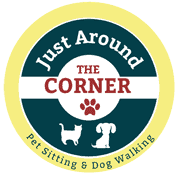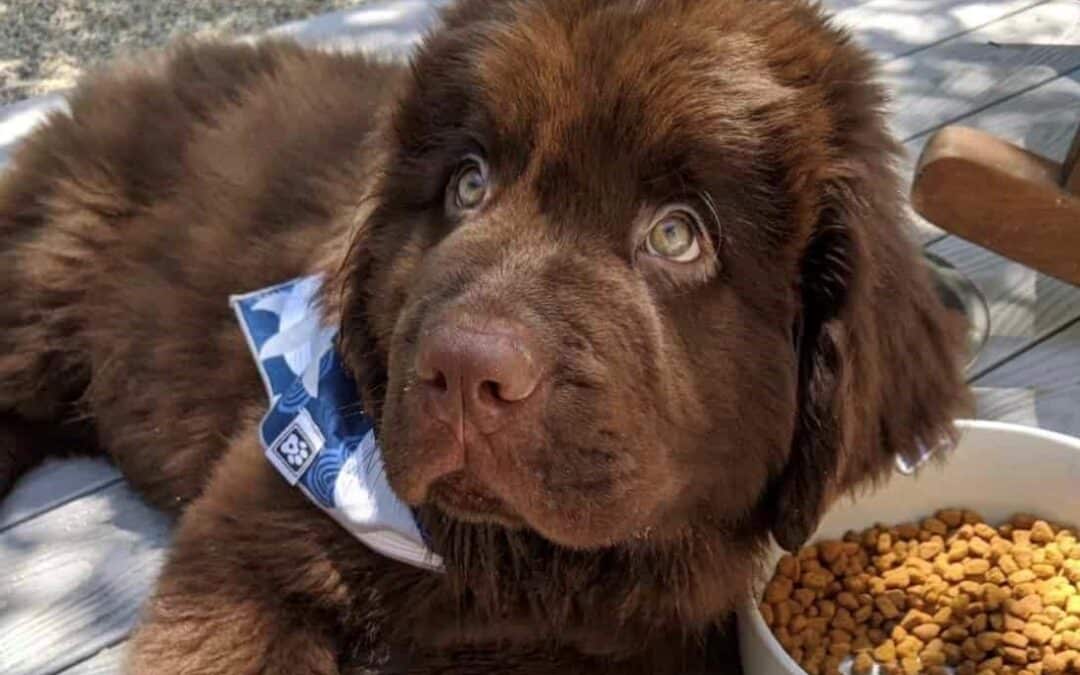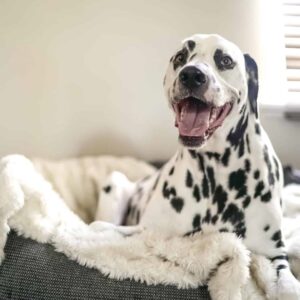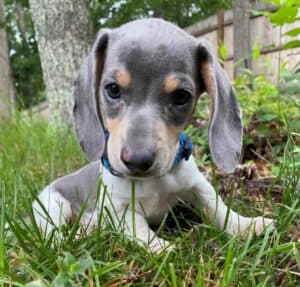
Potty Training Your Puppy 101
It is time to Potty Train your puppy! You have your adorable new puppy home and settled in. She snuggles and licks your face – so sweet. But then, she also pees on your favorite rug, or poops in the corner of the kitchen. Ugh – Where to begin?! Time for Potty Training 101! What you do for potty training in the first few weeks of having a puppy will follow you through the life of your dog. Think of house-training your dog as the foundation of a happy life together. Keep it simple with a schedule, stay consistent and have a positive attitude, and your puppy will be a potty-trained pro in no time. You can do this!
Potty Training: First Things First
The goal of potty training is for your puppy to only poop and pee outdoors, in the spot you want them to. If they need to go out, you want them to let you know. You can begin potty-training your puppy as soon as they arrive (8 weeks). Usually pups start to gain control over their bladder around 12 weeks, but get them used to a regular potty routine as soon as they join your family as an important part of the potty-training process. For the first week or two…play inside, business outside other than short walks on leash. The reason for this is that, when you get your puppy, they will have been with their littermates and have been able to pee and poop as they play in their play area. Puppies are used to this. If you have them playing outside and they do their business while playing, then when you come inside and play they will do the same. They will not know the difference between playing outside or inside and being able to just stop and pee. So, make outside for business-only in the beginning. It will not take long before they understand, and you will be able to have lots of fun outside!
To prepare to house-train your pup there are a few things to do in advance.
- Choose where their “SPOT” will be outside. Decide on an area that is easily accessible for them, a decent size (min. 10’x10’), and that you can stay consistent with.
- Don’t keep your outside potty area spotless. Leave a little so your pup can have the necessary smells to know that is where you want them to go.
- Research the many Potty-Training methods out there to gain as much knowledge of the process as possible.
- Observe your puppy’s habits to assess how well/long your puppy can control their bladder before starting to train. This usually takes a week or two leading up to starting your training.
Potty-Training Schedule
As a general rule the number of hours a puppy can go without using the bathroom is the equivalent to how many months old they are. For example, a 2-month (8 week) old pup can usually go 2 hours between potty breaks, a 3-month old can go 3 hours, and so on. As your puppy grows the hours between relief will also grow and your schedule will vary depending on their house-training progress. For anyone beginning to potty train their dog this schedule is an excellent place to start. Download our free Potty Training 101 Schedule to use as your daily guide: 8-12 Week Schedule 12-16 Week Schedule
6:00 AM Wake up & right out to POTTY
6:15 AM Breakfast
6:30 AM Post breakfast POTTY
9:30 AM Mid-Morning POTTY & Walk
12:00 PM Post Nap/Pre-lunch POTTY
12:15 PM Lunch
12:30 PM Post Lunch POTTY
3:30 PM Afternoon POTTY & Walk
6:00 PM Post Nap/Pre-dinner POTTY
6:15 PM Dinner
6:30 PM After dinner POTTY
9:30 PM Last POTTY before bed (this time will adjust depending on your personal bedtime)
NOTE: Your puppy will not be able to make it through the night without an accident. Be prepared to get up during the night every 2-3hours to take your puppy out.
Remember to always take your pup out for relief following naps and playtime. In addition, a potty break is needed before and after all meals. This schedule is only a starting point. Do not forget to adjust with your growing puppy as needed. Get a FREE age appropriate schedule for your pup here: Potty Training 101 Schedule: 8-12 Weeks 12-16 Weeks

Consistency is KEY
Whatever your schedule looks like, keep it consistent for your dog. Constantly changing up their routine confuses them and can wind up setting back the progress you may have already made. The hours between potty breaks will increase as your pup grows but keep feeding times and walks on the same schedule whenever possible to maintain their regimen. If you are a working puppy mom or dad a regular schedule may seem impossible. Hiring a dog walker/pet sitter for times you are unavailable keeps up the consistency for your pet and expedites the house-training process. Typically, by 4-6 months you will be able to judge for your puppy what their best long-term routine is as every dog is different.
Stay Positive through the House-Training Process
Keep it PAWsitive for your pup! We know how frustrating it can be when our pet uses the bathroom inside, especially on our favorite rug. No matter how trying the times of training may be your pet will respond best to a positive attitude and constructive actions. Punishing your puppy for an accident in the house is not going to teach them what you want them to do. Instead of punishment try clapping loudly to get their attention if you catch them in the act. Verbalize NO or another word they are familiar with and take them outside immediately to teach them the correct way to use the bathroom. Let us not forget the successes; when your pup does their business outside praise them! Your dog wants to please you. Giving extra love and even a cookie will create positive association for your dog making them more eager to please you every time, thus becoming house-trained.

Signs your pup needs to potty
During the first few weeks of your potty-training quest it is important to keep a close eye on your pup. Look for the signs that they need to relieve themselves. Each pup will have his or her own sign, which you can learn by watching carefully. To get started, once they exhibit any of the signs listed below take them to their “potty spot” outside as quickly and gently as possible. Soon you will recognize their “I gotta go” behavior and be able to respond appropriately.
- Sniffing
- Whining
- Circling/Restlessness
- Licking the groin area
- Standing still and lifting the tail (That’s our mascot Quinn’s move)
- Going to a previously “used” in-house area
- Squatting (Catch them quick with this one!)
You can do it!
Potty training your precious pooch is a big responsibility that you can totally handle! When you keep a consistent schedule and stay positive with your pup in everything from the praise to the corrective actions you will have a house-trained fur baby in no time. Remember that puppies are not puppies forever and one day (soon!) the trials of potty training will be a distant memory. Soak it up while you can. Create a schedule that works for you and find ways to keep it up no matter what. Whether you hire a dog walker for additional help or recruit your mom or neighbor to avoid skipping potty breaks your pet will appreciate your hard work. When the day of no more accidents comes so will you!

Need help keeping your pup’s schedule?
Just Around the Corner offers a wide variety of dog walking and pet care options for you and your furry family member. We all know how difficult it can be to keep up a consistent schedule for our dog, especially while potty training. JAC is here to help! Avoid the setbacks of messing up your dog’s routine. Set up a Meet and Greet with a JAC pet care professional. Choose from a variety of visits, walks, and hiking options that best suit your dog and never worry if your pup’s schedule is “off” again! Call or text: 508-245-1389 to set up a meet and greet TODAY.
Just Around the Corner offers daily Dog Walking and Pet Sitting in Plymouth, MA. To learn more about how Just Around the Corner can help, check out our Services Page. You can also Contact Us for more information. Be sure to Like us on Facebook and Follow us on Instagram!





Recent Comments